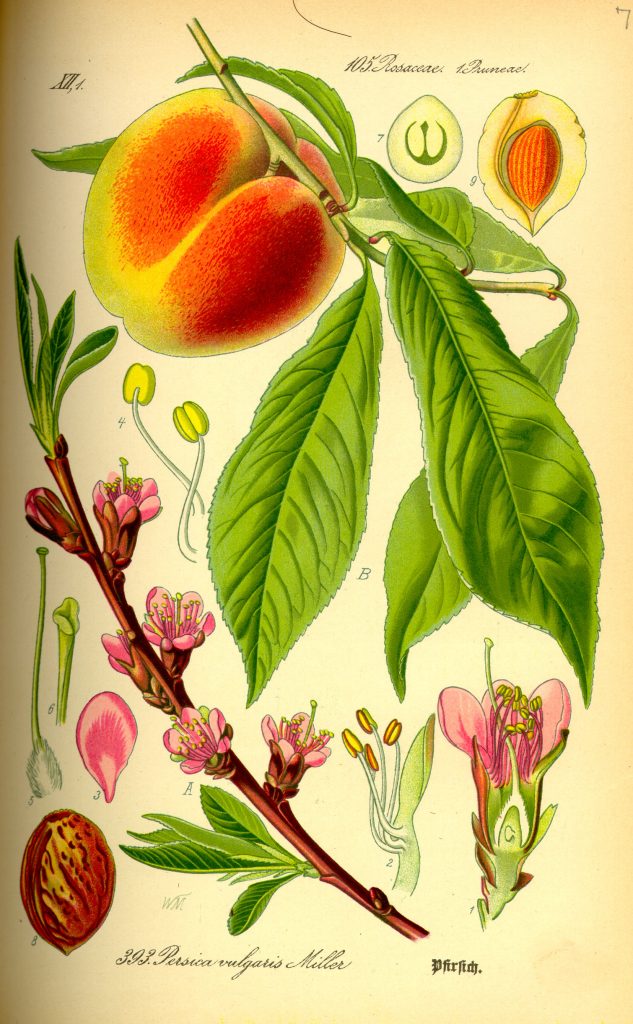
A native of China, the peach is a small deciduous short-lived tree in the rose family, Rosaceae, and in the same genus as plums, cherries, almonds, and apricots. Peaches have been cultivated since c 6000 BC, reached Greece by about 300 BC, and were well known to the Romans by 79 AC. Called malum persicum (“Persian apple”) by the Romans, it was probably known to them for its medicinal properties that included treatment for many problems from rheumatism to coughs. Peaches were considered expensive fruits in ancient times, probably the result of their perishability. Many peach pits and peach wood remnants have been found in ancient Pompeii and peach fruits are shown in a fresco from the House of Julia Felix, a dwelling that had large fruit orchard. The trees are very attractive when in bloom and relatively small so were a good choice for an urban garden or orchard. Photo Credit Wikimedia Commons
The trees grow up to 25′ tall and have upward reaching branches that form an open rounded crown. New growth is red and green turning gray-brown with maturity. The shiny dark green leaves are lanceolate, pinnately veined, and three to six inches long. The flowers appear singly before the leaves in spring and may be single, semi-double, or double. They are one inch across, have five petals, and are white to red. The fleshy edible fruits ripen in mid-summer, are three inches across, and have a single brown seed with a woody husk. The flesh of the peach can be white or yellow and the seed may stick to the stone (clingstone) or be free from it (freestone). Peach trees are grown for both the beauty of their bloom in spring and for the fruit they produce but they are difficult to grow well. They need hot summers and cold winters and suffer damage from many pests and diseases. Many varieties are available in modern times and care should be taken to select the ones that are known to do well in a specific area. Most varieties are self-pollination.
Size: 15-25’ H x 15-25’ W
Light: Full sun
Soil: Average, deep, moderately moist, well-drained; does not tolerate alkali, salt, or boggy soils.
Hardiness: Zones 5-9